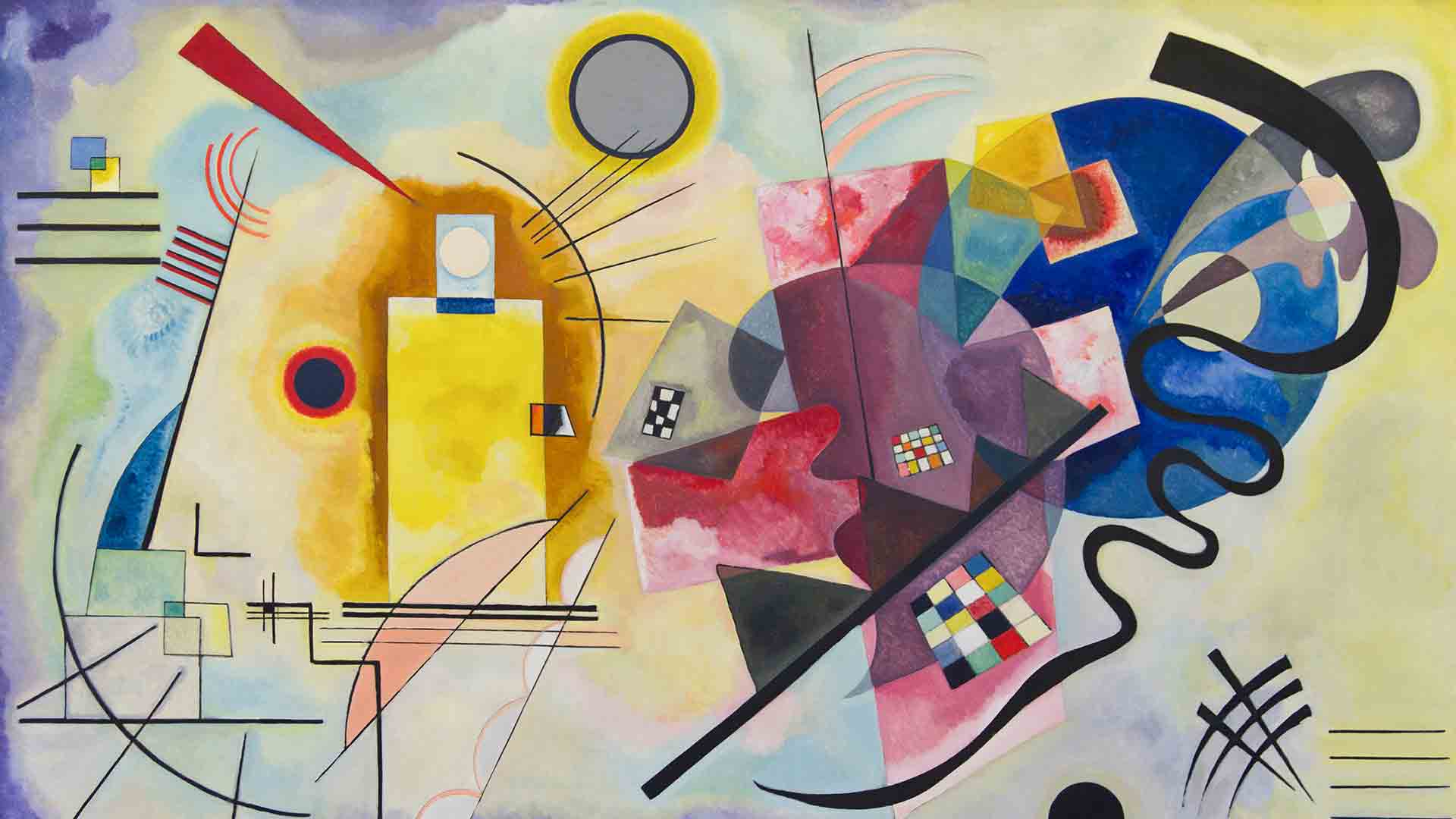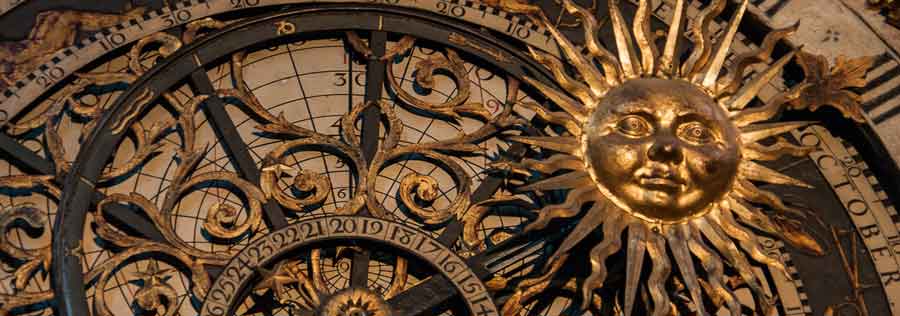

See highlights and high-quality resources for advanced investigations.
Modern Art (c. 1860 - 1975) Modern art, painting, sculpture, architecture, and graphic arts characteristic of the 20th and 21st centuries and of the later part of the 19th century. Modern art embraces a wide variety of movements, theories, and attitudes whose modernism resides particularly in a tendency to reject traditional, historical, or academic forms and conventions in an effort to create an art more in keeping with changed social, economic, and intellectual conditions. –Encyclopedia Britannica │ Wikipedia │ Metropolitan Museum │ Smarthistory
Gentle Reminder:
The context of art;
the historical, religious,
or environmental information that
surrounds the work helps in
understanding its meaning;
content, message or narrative
expressed by the subject matter.
TICE ART 1010 Twentieth Century Art │
At the beginning of the 20th century
the Fauvs, a French term for "wild beasts"
led by Henri Matisse, used color in a way
to defy reality. One term applied to
the new approaches in art was
avant garde, the French military term
that meant the advance guard and being avant garde
was the cool, in hip thing to be.
The son of a Spanish art professor
Pablo Picasso was an art prodigy trained
in the academic style as shown by the self portrait
"Woman with a Hat"
he painted at 14 in ~1905 and Les Mademoiselle Avignon in 1907.
This groundbreaking painting
replaced the linear perspective and
rounded volumes of traditional art with
splintered planes and a deliberately
flat 2D surface. It kicked off a new
experimental movement called Cubism... │
Khan Academy
Fauvism │
is the style of les Fauves
(French for "the wild beasts"),
a group of early twentieth-century modern artists
whose works emphasized painterly qualities and
strong color over the representational or realistic values
retained by Impressionism.
While Fauvism as a style began around 1904
and continued beyond 1910,
the movement as such lasted only a few years, 1905–1908,
and had three exhibitions.
The leaders of the movement were André Derain and Henri Matisse.
The paintings of the Fauves
were characterized by seemingly wild brush work and
strident colors,
while their subject matter had a high degree of
simplification and abstraction.
Fauvism can be classified as an extreme development
of Van Gogh's Post-Impressionism
fused with the pointillism of Seurat
and other Neo-Impressionist painters, in particular Paul Signac.
Other key influences were Paul Cézanne
and Paul Gauguin. Con't...
Wikipedia │
Video: Fauvism - Overview - Goodbye-Art Academy
The Case for Abstraction | The Art Assignment | PBS Digital Studios │ For much of human history, people made art by trying to represent the world as it appeared around them. Until about 100 years ago, when a bunch of artists stopped trying to do that. It was shocking then and it still upsets and confounds today. How are we supposed to deal with art completely removed f rom recognizable objects? And why should we? This is the case for Abstraction. —PBS Digital Studios
Expressionism │
artistic style in which the
artist seeks to depict not objective reality
but rather the subjective emotions and
responses that objects and events
arouse within a person.
The artist accomplishes this aim through
distortion, exaggeration, primitivism, and fantasy
and through the vivid, jarring, violent,
or dynamic application of formal elements.
In a broader sense Expressionism is
one of the main currents of art in
the later 19th and the 20th centuries,
and its qualities of highly subjective,
personal, spontaneous self-expression
are typical of a wide range of
modern artists and art movements.
Con't...
Encyclopedia Britannica │
Smarthistory │
Wikipedia
Video: Edvard Munch - The Scream (1893) │
is one of the most
iconic paintings in the world,
but what is it about?
By watching this video you'll learn
the major facts about 'The Scream'
by Norwegian painter Edvard Munch (1863-1944).
The painting will be visually analyzed
(composition, ordonnance, color, technique, style, etc.)
and the common interpretations are explained.
Cubism │ highly influential visual arts style of the 20th century that was created principally by the artists Pablo Picasso and Georges Braque in Paris between 1907 and 1914. The Cubist style emphasized the flat, two-dimensional surface of the picture plane, rejecting the traditional techniques of perspective, foreshortening, modeling, and chiaroscuro, and refuting time-honoured theories that art should imitate nature. Cubist painters were not bound to copying form, texture, colour, and space; instead, they presented a new reality in paintings that depicted radically fragmented objects. Con't... Britannica │ Smarthistory │ Wikipedia │ Video: How To Understand Picasso
Dada │ nihilistic and anti-aesthetic movement in the arts that flourished primarily in Zürich, Switzerland; New York City; Berlin, Cologne, and Hannover, Germany; and Paris in the early 20th century. Dada did not constitute an actual artistic style, but its proponents favoured group collaboration, spontaneity, and chance. In the desire to reject traditional modes of artistic creation, many Dadaists worked in collage, photo-montage, and found-object construction, rather than in painting and sculpture. Con't... Encyclopedia Britannica │ Smarthistory │ Wikipedia │ Video Playlist
Surrealism │ Surrealism, movement in visual art and literature, flourishing in Europe between World Wars I and II. Surrealism grew principally out of the earlier Dada movement, which before World War I produced works of anti-art that deliberately defied reason; but Surrealism’s emphasis was not on negation but on positive expression. The movement represented a reaction against what its members saw as the destruction wrought by the “rationalism” that had guided European culture and politics in the past and that had culminated in the horrors of World War I. Con't... Britannica │ Smarthistory │ Wikipedia │ Video Playlist: Dada and Surrealism
Abstract Expressionism │ broad movement in American painting that began in the late 1940s and became a dominant trend in Western painting during the 1950s. The most prominent American Abstract Expressionist painters were Jackson Pollock, Willem de Kooning, Franz Kline, and Mark Rothko. Others included Clyfford Still, Philip Guston, Helen Frankenthaler, Barnett Newman, Adolph Gottlieb, Robert Motherwell, Lee Krasner, Bradley Walker Tomlin, William Baziotes, Ad Reinhardt, Richard Pousette-Dart, Elaine de Kooning, and Jack Tworkov. Most of these artists worked, lived, or exhibited in New York City. Con't... Britannica │ Metropolitan Museum │ MoMa: The Museum of Modern Art Playlist │ Video: MOCA Abstract Expressionism
Pop art │ art in which commonplace objects (such as comic strips, soup cans, road signs, and hamburgers) were used as subject matter and were often physically incorporated in the work. The Pop art movement was largely a British and American cultural phenomenon of the late 1950s and ’60s and was named by the art critic Lawrence Alloway in reference to the prosaic iconography of its painting and sculpture. Works by such Pop artists as the Americans Roy Lichtenstein, Andy Warhol, Claes Oldenburg, Tom Wesselman, James Rosenquist, and Robert Indiana and the Britons David Hockney and Peter Blake, among others. Con't... Britannica │ Smarthistory │ Wikipedia │ Video: A Guide to POP ART by the Art Gallery of NSW
Op art │ artsandculture.google.com also called optical art, branch of mid-20th-century geometric abstract art that deals with optical illusion. abstract formal relationships, purposeful manipulation of formal relationships in order to evoke perceptual illusions, ambiguities, and contradictions in the vision of the viewer. The principal artists, late 1950s and ’60s were Victor Vasarely, Bridget Riley, Richard Anuszkiewicz, Larry Poons, and Jeffrey Steele. Con't... Britannica │ Metropolitan Museum │ Wikipedia │ Video: Op Art
Modernist Sculpture │ represented the presentation of found objects as finished art works and moved away from traditional processes of emphasis on the depiction of the human body, with the making of constructed sculpture. Con't... Wikipedia Examples
Land Art │ or earth art is art that is made directly in the landscape, sculpting the land itself into earthworks or making structures in the landscape using natural materials such as rocks or twigs. Land art was part of the wider conceptual art movement in the 1960s and 1970s. The most famous land art work is Robert Smithson’s Spiral Jetty of 1970, an earthwork built out into the Great Salt Lake in the USA. Though some artists such as Smithson used mechanical earth-moving equipment to make their artworks, other artists made minimal and temporary interventions in the landscape such as Richard Long who simply walked up and down until he had made a mark in the earth. Con't... Tate │ Smarthistory │ Wikipedia │ Video: The Case for Land Art | The Art Assignment | PBS Digital Studios
The History of Animation — Types of Animation Styles Explained
The history of computer animation began as early as the 1940s and 1950s, when people began to experiment with computer graphics – most notably by John Whitney. It was only by the early 1960s when digital computers had become widely established, that new avenues for innovative computer graphics blossomed. Cont... –
Internet 101 | National Geographic │ Few technological innovations in history have made as much of an impact as the Internet. Learn about the predecessor of the Internet, called ARPANET; how text, audio, and video messages are transmitted through the Internet; and how this transmission of information has changed the lives of billions around the world. —National Geographic (This includes web design and visual communications.)
The Internet │ existed before the Web, but the Web redefined the Internet - what started out as a protocol for helping scientists share documents and references has turned into one of the most important forces in the 21st century. But how did we get here? Join Richard Campbell as he tells the story of the World Wide Web and the web development tools and techniques that made it all possible. From the early versions of HTML where you laid out web pages with tables (GeoCities anyone?) and simple scripting languages to CSS, JavaScript and HTML 5, leading to Single Page Applications, Progressive Web Apps and Web Assembly! We've come a long way, and the story is continuing! —Richard Campbell Con't... Video: How We Got Here - The History of Web Development
Video: Art in the Age of the Internet 1989 to Today │ explores the widespread cultural impact of the internet on art. Featuring a broad range of works a cross a variety of mediums—including painting, performance, photography, sculpture, video, and web-based works— the exhibition considers the extensive effects of the internet on artistic practice and contemporary culture. —The Institute of Contemporary Art/Boston
How Art Can Transform The Internet │ Nerdwriter1
Refer to Blackboard (Suggestions):
Doodle Designs (Abstract Expressionism) and Pop Art Portraits
NEXT:
Contemporary Art

Below, is a small sample of
information links
coordinated with
video playlists.
Each link and video thumbnail takes you to the category on the Resource page.
Once there, activate the links.
Resources
Creative Commons Public Domain
0 1.0 Universal 0 1.0) License